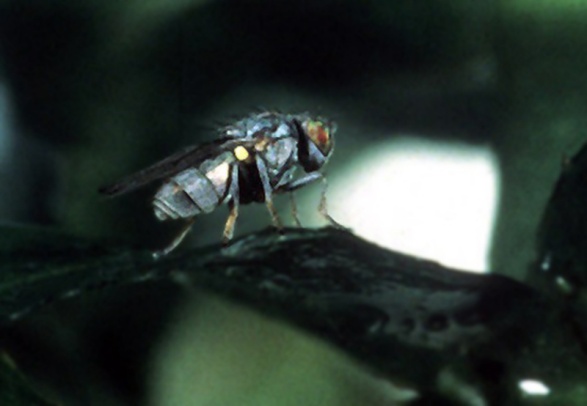
Adult of leaf mining fly, Hydrellia pakistanae Deonier
Asian hydrilla leaf mining fly
Hydrellia pakistanae Deonier
(Insecta: Diptera: Ephydridae)
Hydrellia pakistanae is a small gray fly, 1 to 2 mm in length, that was introduced into the United States in 1987 as a biological control agent of the aquatic weed known as hydrilla, Hydrilla verticillata (L.f.) Royle. Asian hydrilla leaf mining fly resembles a house fly, but the adults have light yellow or golden faces.
Females deposit one to several white to pale yellow, cigar-shaped eggs on hydrilla or other plants at the water surface. The developing maggots (larvae) damage about 12 leaves as they complete their development in nine to 16 days. Pupae are formed at the bases of mined leaves, and new adults float to the water surface in an air bubble about six to 15 days following pupation.
Hydrellia pakistanae is native to Asia and is established in Florida, Alabama, Tennessee, and Texas.
Larval mining activity produces distinct, transparent tunnels in the leaves. The margins of older mined leaves are red.
Images
To
save the Web-optimized images shown below to your hard drive:
PC users: right click to "Save Picture (or Image) As..."
Mac users: click and drag to your desktop.

Adult
of leaf mining fly, Hydrellia
pakistanae Deonier
(Photography:
USDA
Agricultural Research Service Archive, USDA Agricultural Research
Service, Bugwood.org, with permission 2013-09-05)